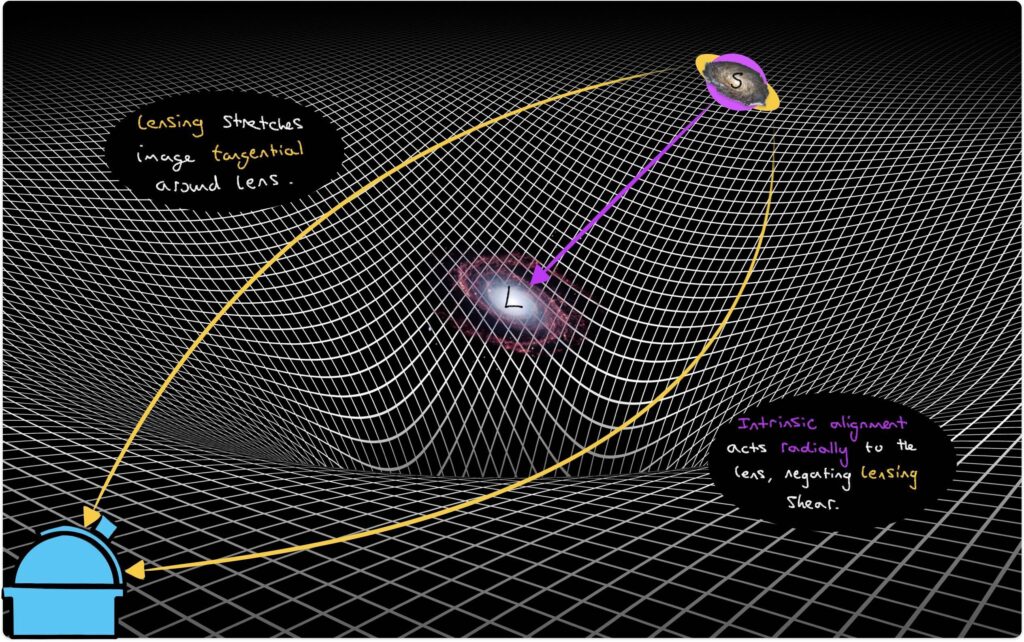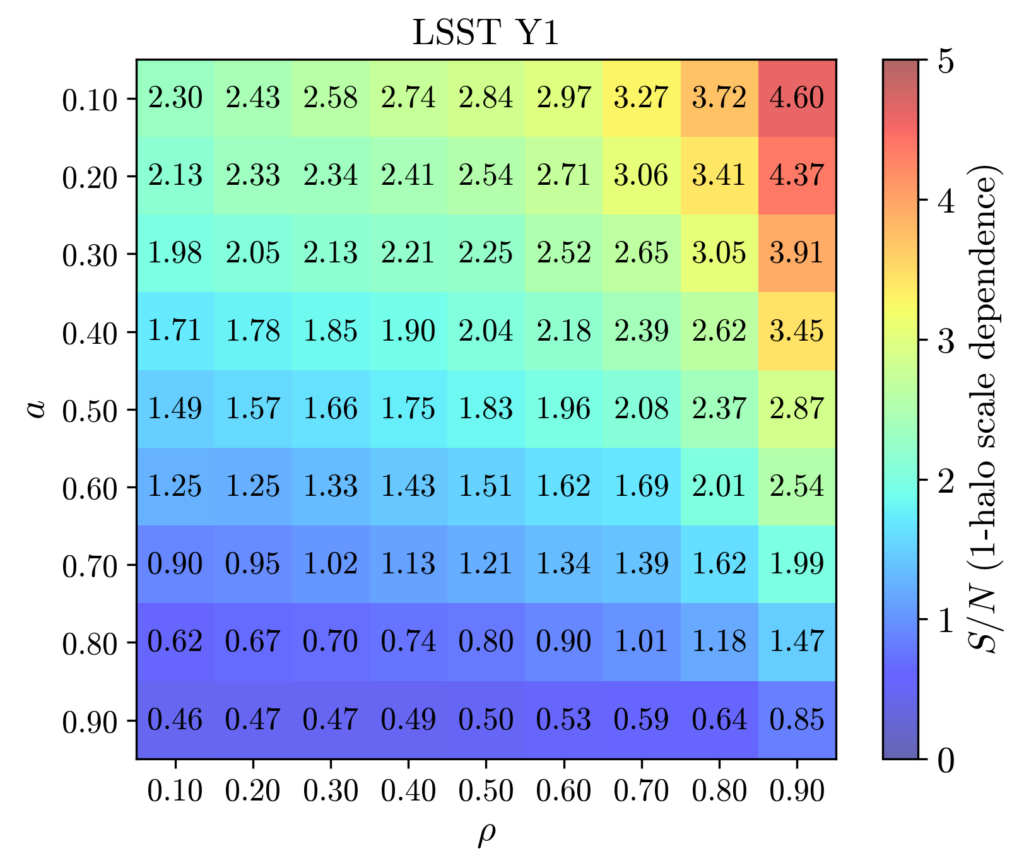Charlie MacMahon has just submitted his first paper as first author for publication, and it is already available as a pre-print on the arXiv! In it, he and his supervisor Danielle Leonard investigate a novel method for measuring intrinsic alignment.

Intrinsic alignment refers to a phenomenon in which galaxies near to each other will align with local, large-scale gravitational fields in a way that causes their shapes to become statistically correlated. These correlations can bias weak lensing measurements, but are themselves also interesting tracers of galaxy evolution and underlying cosmology.

Charlie’s paper looks at measuring intrinsic alignment using two different estimators of galaxy shape, which are individually sensitive to different parts of galaxies, because it’s expected that the outer regions of a galaxy should be more aligned with local fields than the inner regions. This method allows a portion of the intrinsic alignment signal to be recovered in a way that is more robust to uncertainty in galaxy redshift than other methods.
In the paper, the method is applied for the first time to real galaxy shape data from the Dark Energy Survey Year 1, and various assumptions of the method are tested to help develop a framework of necessary considerations and steps for using this method. The paper shows the difficulty of working with observational data and the importance of rigorous testing for contamination and systematics.

Taking what is learnt from this first application to data, forecasts are conducted using a mock catalogue of Rubin Observatory data (part of the next generation of lensing surveys) and a contemporary model for intrinsic alignment. With this data, the performance of the method is evaluated in various contexts, and requirements are then placed on the shape estimators to ensure robustness to systematics and a strong measurement are achieved. Overall, the paper proposes a clear path for the continued development of the method, and demonstrates promise for its use with future Rubin Observatory data.
